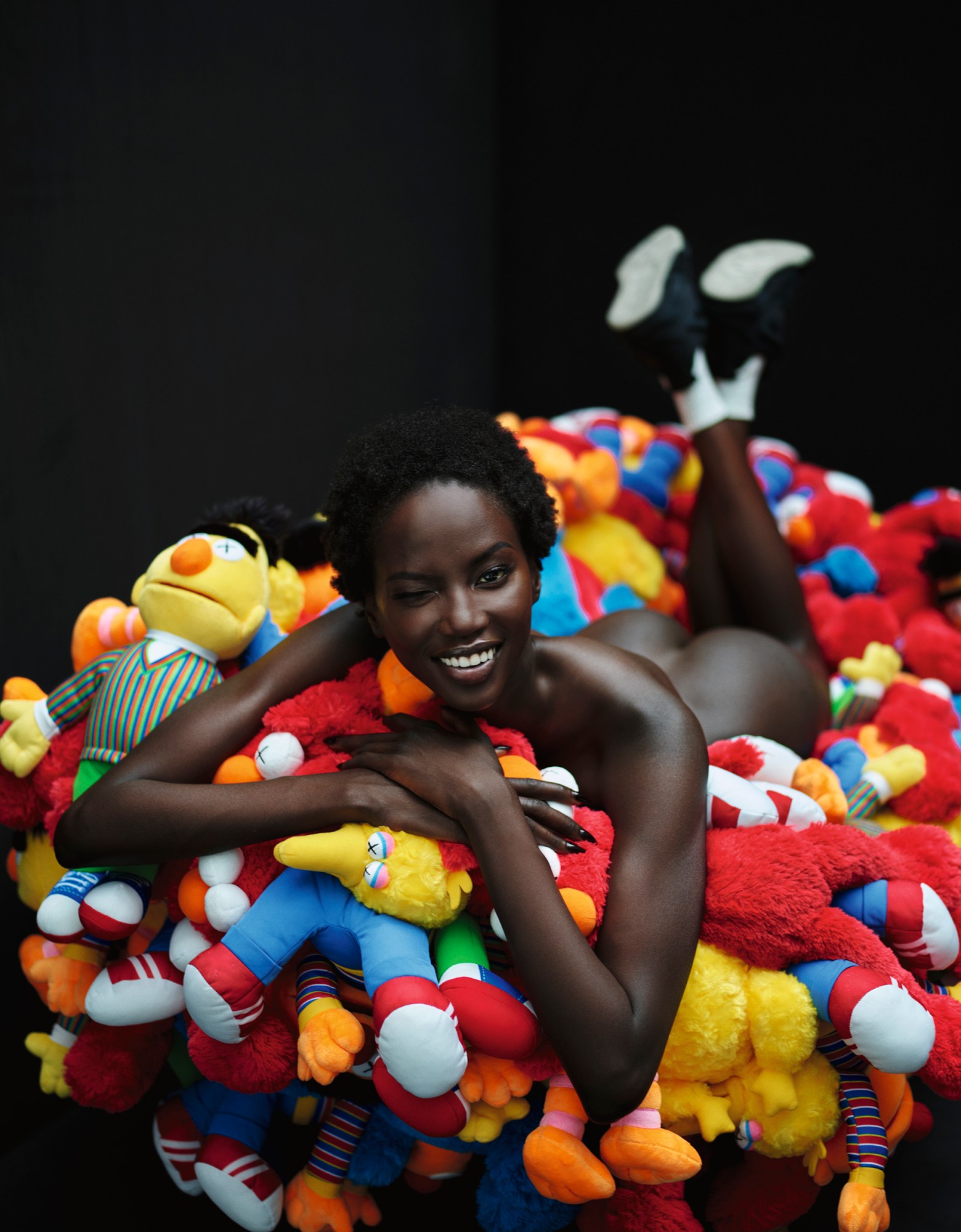This story originally appeared in i-D’s The Summer! Issue, no. 372, Summer 2023. Order your copy here.
I was honoured to be asked to lead a conversation between KAWS and Futura. Let’s be real: neither are new names in today’s culture, but while a lot of people are lucky to enjoy a few seasons of success before the crowd moves on, these two have stayed the course. They have remained relevant throughout the decades thanks to lucky moves and calculated decisions, but most of all they’ve stayed true to themselves: their output continuing to grow at a spectacular pace without it ever feeling forced.
KAWS’ COMPANION figure may be the best known graffiti-derived character to permeate modern pop culture. From toys, to fashion houses, and the Macy’s Thanksgiving Day Parade, his subversive spins on beloved animated personas appear everywhere we turn. This summer marks the fifteen-year anniversary of i-D’s July 2008 issue curated by KAWS. His artwork was featured on the cover and throughout the magazine, as well as his friends and family. Now he is back in i-D, and even more relevant in driving culture forward.
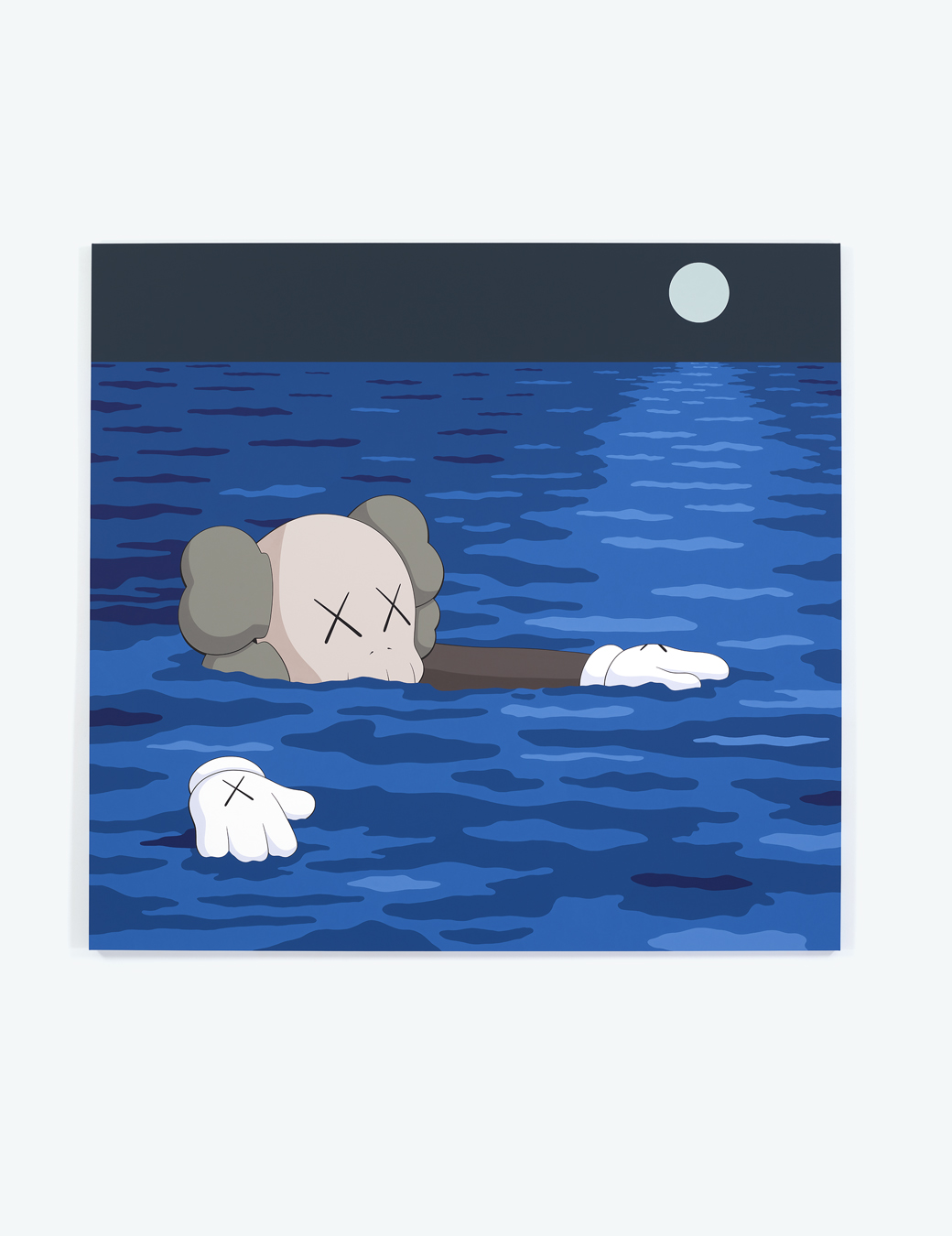
Futura started his graffiti adventures on New York City subways in the early 1970s, where his handstyle and position at the forefront of the movement led to his collaboration with the Clash in the 80s, alongside exhibiting in galleries and designing a wide range of media. Just a few years ago, Futura’s iconic lettering was scrawled across the magazine’s 40th anniversary issue, which was graced by Martha Cooper’s photograph of BREAK, his 1980 painting sprayed on the side of a subway car.
Ahead of bringing KAWS and Futura together for this conversation, it was a task sorting fact from fiction. While I know them both personally, I also know each carries a bunch of lore told about them, and I wanted to avoid the cliché questions about advice on “how to succeed.” Instead, I wanted to have a casual conversation and see where their interests took us. After all, from the streets to couture, their work has had an immense influence on fashion and wider culture, with their work being enjoyed on posters and records as much as it is in fine art circles. Yet they haven’t let success stall them and both have their eyes open and ears to the ground, staying on top of what’s going on in graffiti, inspired to always keep creating.
This issue, and both artists’ very existence, calls for celebration. I’m happy to get in on the conversation as KAWS and Futura chop it up about sticking around, family, competition, their friends, and most importantly, the thing that got us all here: graffiti.

Roger: How do you typically start your days?
KAWS: I love the mornings. I tiptoe downstairs and take the dog out while trying not to wake anybody. I get about an hour of peace and quiet and then it all starts. The kids get up, I help get them ready and the day begins. I roll into the studio around 9AM and get to work.
Futura: I never had a dog; I did have kids to take care of that are grown now. It’s casual these days. I’m up at 7 or 8AM. I go for the coffee to get me going, then slow roll to the office, but we get to work around 9AM.
Roger: Do you go to bed thinking about work?
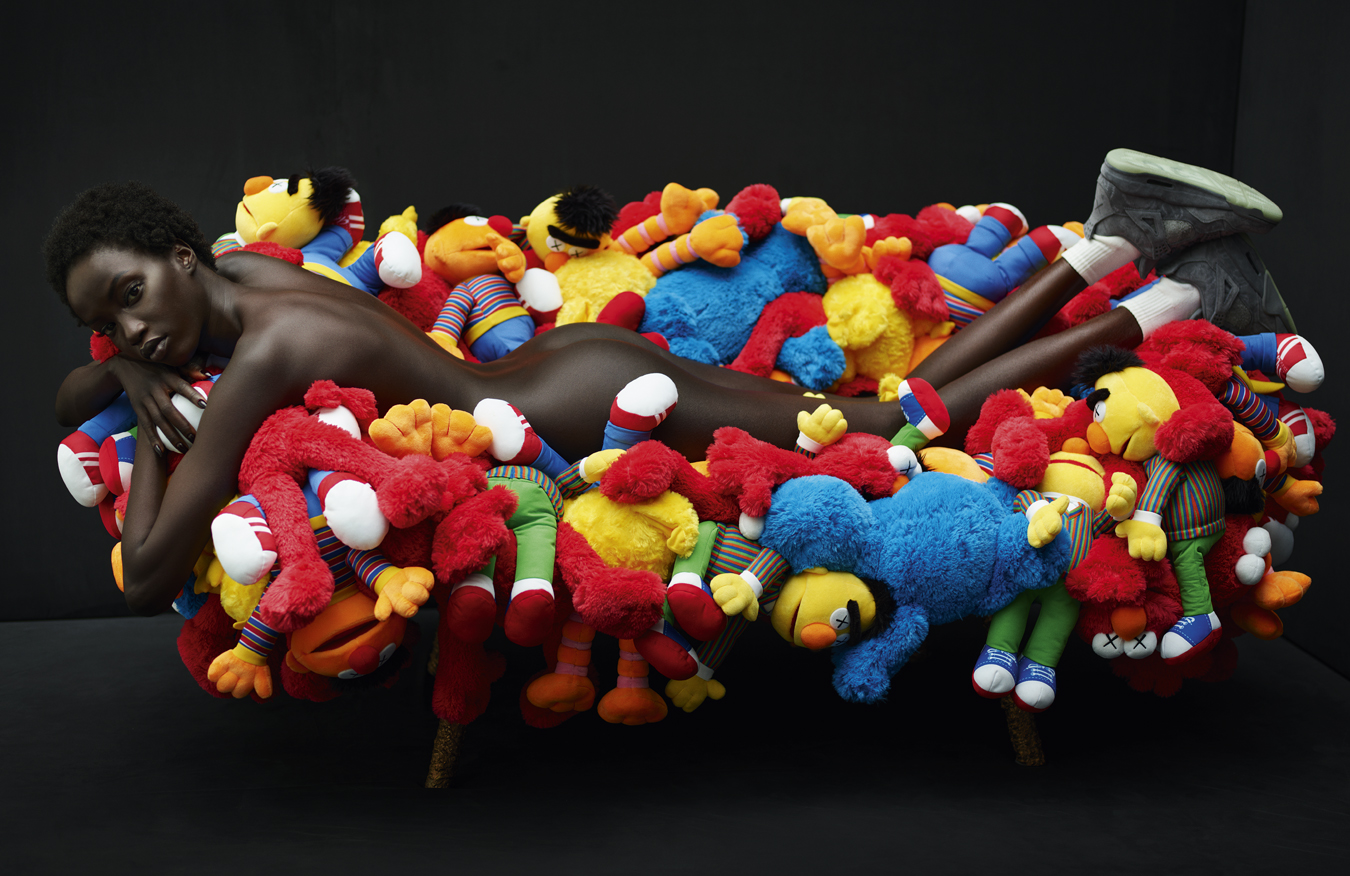
KAWS: It depends on what’s going on and if I am at home or travelling. I have nights where I do, but I also have a lot of nights falling off to sleep where I’m just thinking about other things going on in my life or just trying to relax. But I always think about work when I wake up and the projects to tackle for the day.
Roger: Aside from your very intense work schedules, what other interests do you have and what are you doing to relax?
KAWS: Honestly, for me, it’s about family and the kids. It’s a luxury to find time to look at books and relax. I tend to collect stuff. The research I do, and delving into other artists’ trajectories and learning about them, is always a distraction in the best of ways.
Futura: I’m a sports guy, and I’m also big into cycling. I’m looking around at scores and who’s doing what around the leagues. I’m a Mets guy even though everyone thinks I am a Yankees guy. Sorry, Yankees. But that’s the New York rivalry thing!
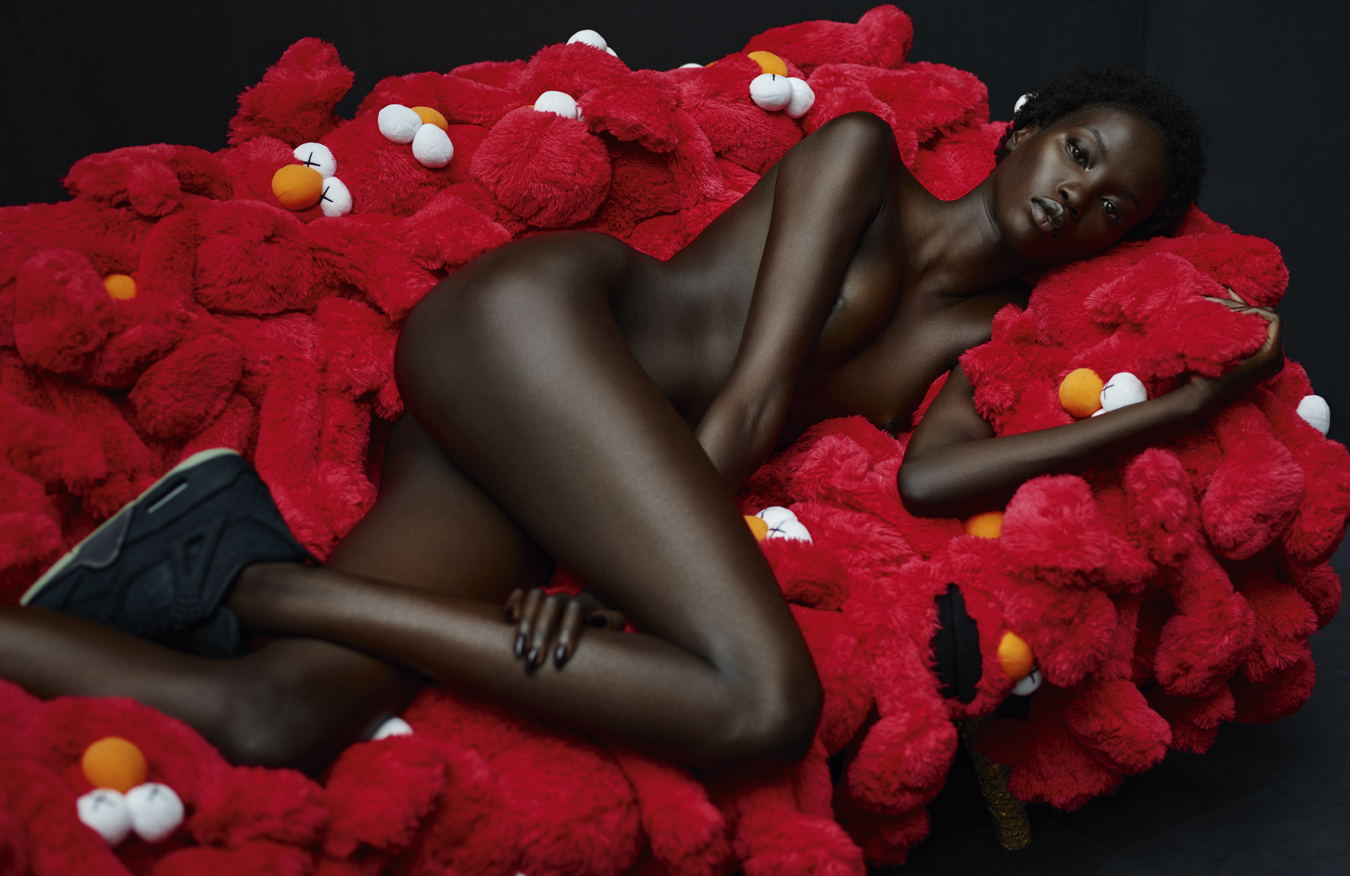
KAWS: I learned that when we went to the Yankees-Mets game together and we were in the Yankees owners’ box and you were rooting for the Mets.
Futura: What’s up with the cat photos you’re often posting? They are always making me laugh. But I thought you were more of a dog guy?
KAWS: I think cats communicate better online than dogs. There’s a lot of common things that I relate to in the photos and videos. And once you look at one video, your whole algorithm shifts and you start getting bombarded with them. I try not to share too many, but occasionally I can’t help it. Lenny [Futura], you send me more cat videos than anyone!
Futura: I mean, yeah, we got game over here! Roger, how many pizza and dog videos do we send you?! What you said about the algorithm taking command based on what the individual is viewing at any moment, or their viewing history, is very real. I don’t mind my own discovery, but I don’t like it when I’m being force-fed. I love rabbit holes; I love Bugs Bunny.
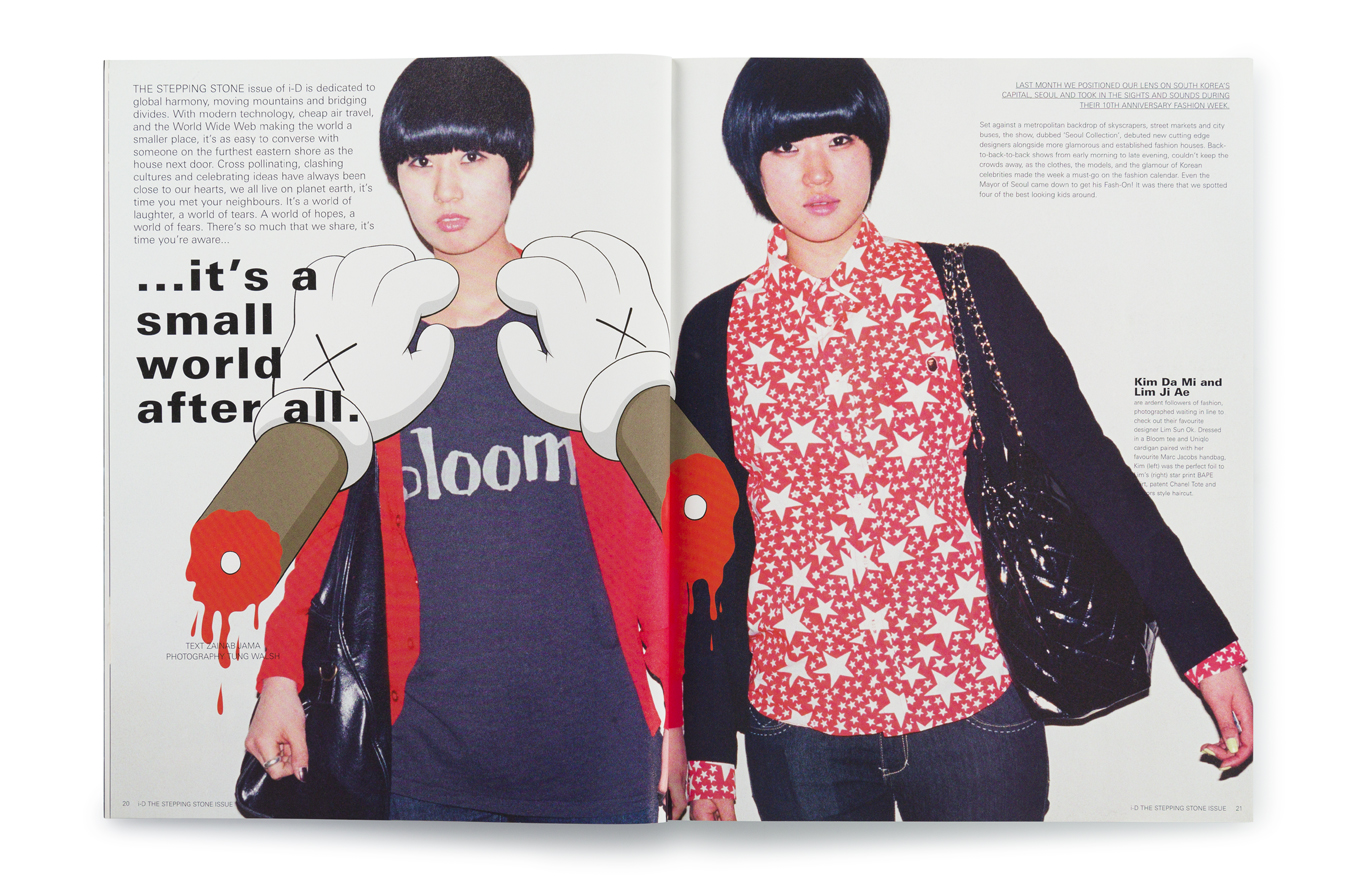
Roger: You both support your friends and things that you are fans of and appreciate. You post about your friends. You show up at your friends’ openings. You collect your friends’ work and are both great at mailing packages. How important is that?
Futura: We’re all part of a community here. It’s important that we support our friends and make a statement that can be seen by the public at large. There is always a lot of self-indulgence that goes on, but I feel it’s nice to use your platform to recognise your contemporaries, your peers, and even obscure folks who just pop out of the woodwork.
KAWS: I’m a fan. I like the things I share. There’s a lot of eyes on me that might not have gone that far down the rabbit hole of all the things I post. I am always learning and discovering new things, or wanting to shed light on something or someone that is important to me, my inspiration and sometimes development. It’s a great way to keep this community moving forward while respecting the past at the same time. Art is powerful. Lenny, I see how generous you are with the birthday shout-outs and recognition. I think it’s important. I’m always shocked – how do you know everybody’s birthday?
Futura: I’m being supported now by a great partner, and we’re pretty OCD.
Roger: Community support shows from both of you.
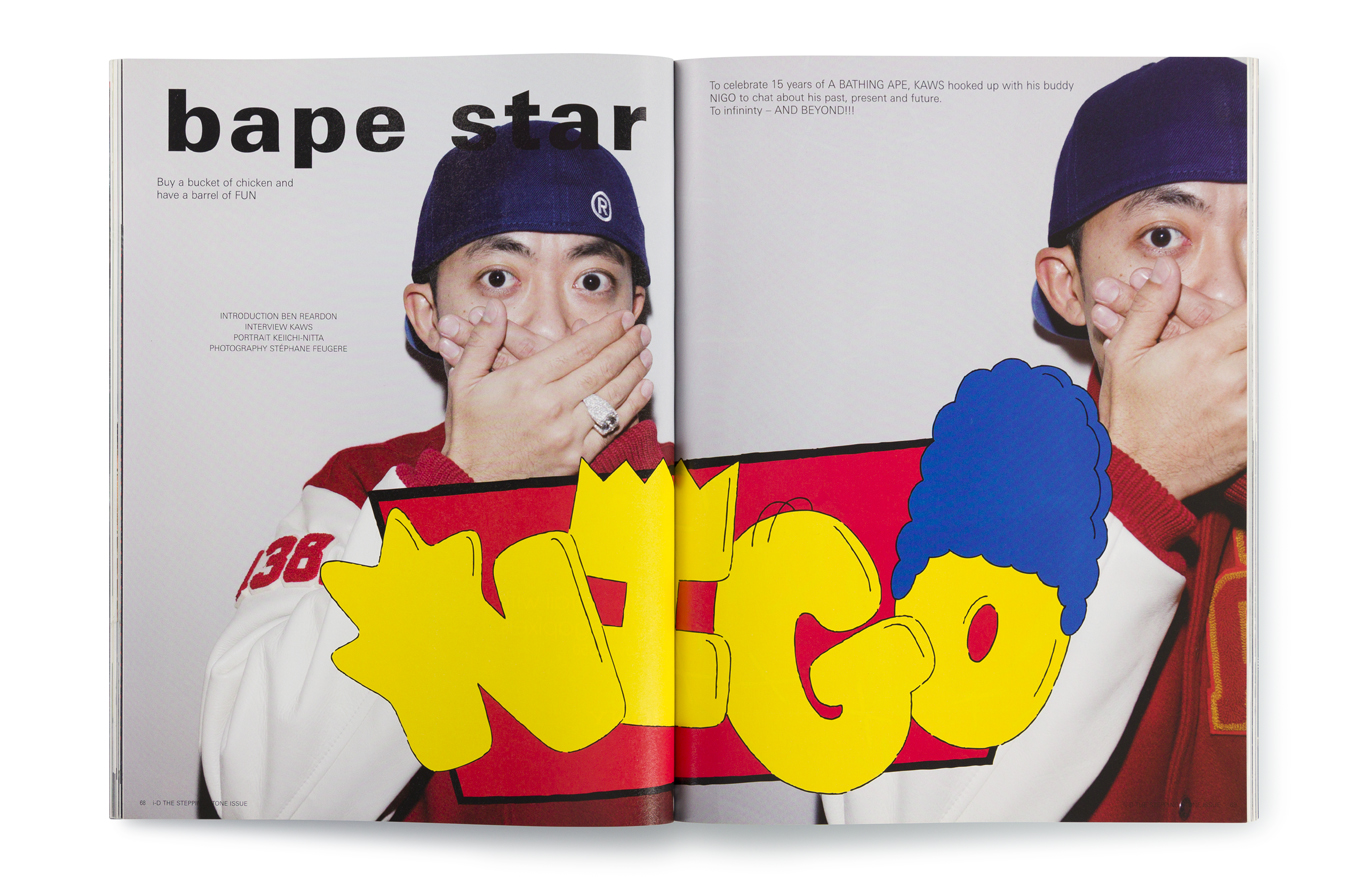
Futura: This whole community, it’s super competitive but everybody’s giving it their best. I don’t feel threatened, I’m not in competition with anyone. To me success is not measured by age or finances, but by integrity and work ethic and output.
Brian [KAWS], you have a wonderful family, and you know the value of that by comparison. And me too, by having kids that are now in their 30s. I know that all that investment over the century was my biggest accomplishment, and is the thing I’m most proud of beyond my own identity.
At this point, I’m just happy to share: I’m happy to recognise and talk about someone’s exhibition and promote it. I love going to other people’s openings. But I also get a weird feeling sometimes as I don’t want to go to something and then overshadow it with people taking photos and having me sign things. I just have a feeling that sometimes people aren’t even looking at the work. They’re over here chasing me down the block.That’s just a weird thing for me. But I’m always out there, you’ll see me. But then, watch out because you’ll turn around, and I’ve disappeared. I’m quick to make an entry, but I know how to make an exit. Often you will only see me supporting in the digital – that way I don’t interfere with others’ stories as much.
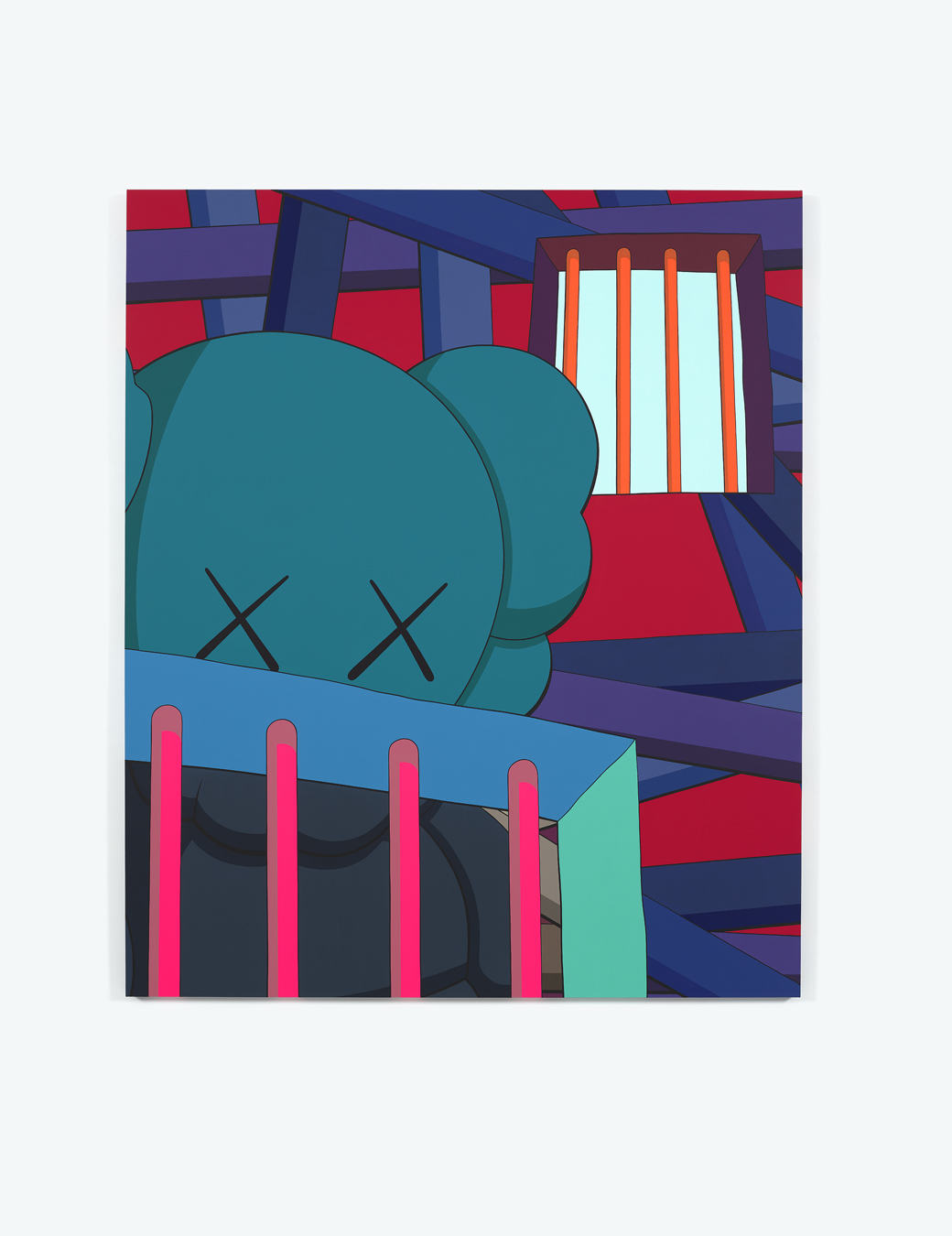
Roger: Futura, you said a word a few minutes ago that Brian, I’d love you to comment on: “competition”. To me, it is something people need to stop worrying about and just do what they do best.
KAWS: There’s nothing better you can do than focus on your own work. It’s the only thing that is going to give back to you. The landscape’s forever shifting. You’ll have good moments, you’ll have bad moments. Every artist does. My competition is with myself, waking up and figuring out how to bring the things I want to fruition. That’s what I think about. I don’t think about other people because there’s always another person out there. Somebody’s always doing more, somebody’s always doing less.
Futura: Your biggest competitor is ultimately going to wind up being yourself in the sense of keeping yourself motivated. You must self-generate the energy required to get up and go create. Why should it be a competition? We’re not athletes. It’s not a final in school. There’s no clock running. It’s not anything like that. It’s the beauty of this field and the luck of individuals who can make a life of all of this.
This isn’t something where I feel you could even age out of the opportunity. I’m inspired to keep it moving. I’m at the fourth part of a four-part act that could still run for 25 or more years. I’m very optimistic about the future. All I need to do is keep everything afloat, which recently I’ve managed to do better than I had in my previous life.
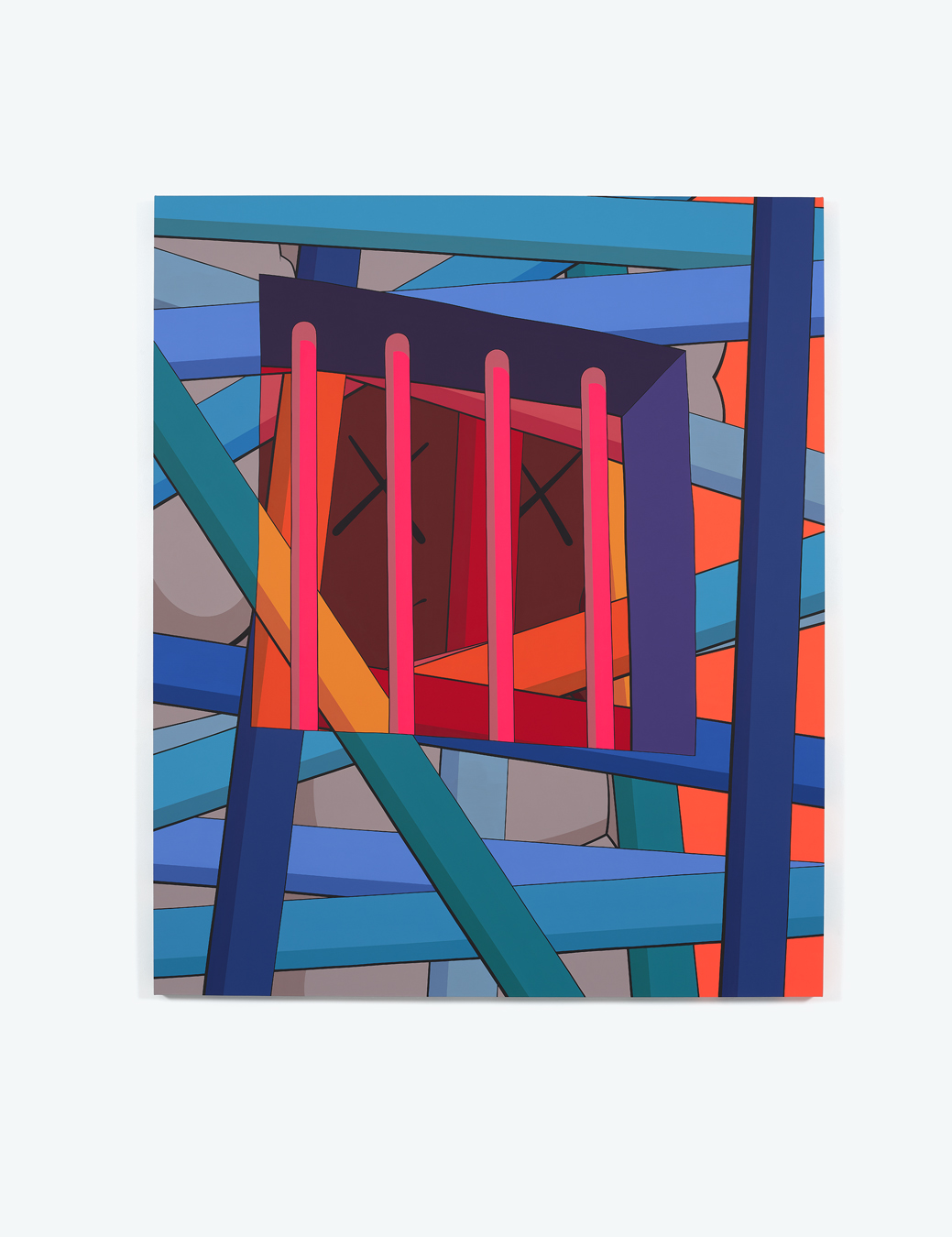
Roger: Both of you have some unique trademarks to your works. Is there a moment when either of you says – “you know what, these icons work?”
KAWS: I’m waiting for it…
Futura: It’s got to be your COMPANION!
KAWS: I went with José [Parlá] the other day to a Nets game and we were sitting courtside. A player from the other team backed up right in front of me, and his calf had a COMPANION tattoo on it! I could see it creeping out of his sock. It was a strange moment.
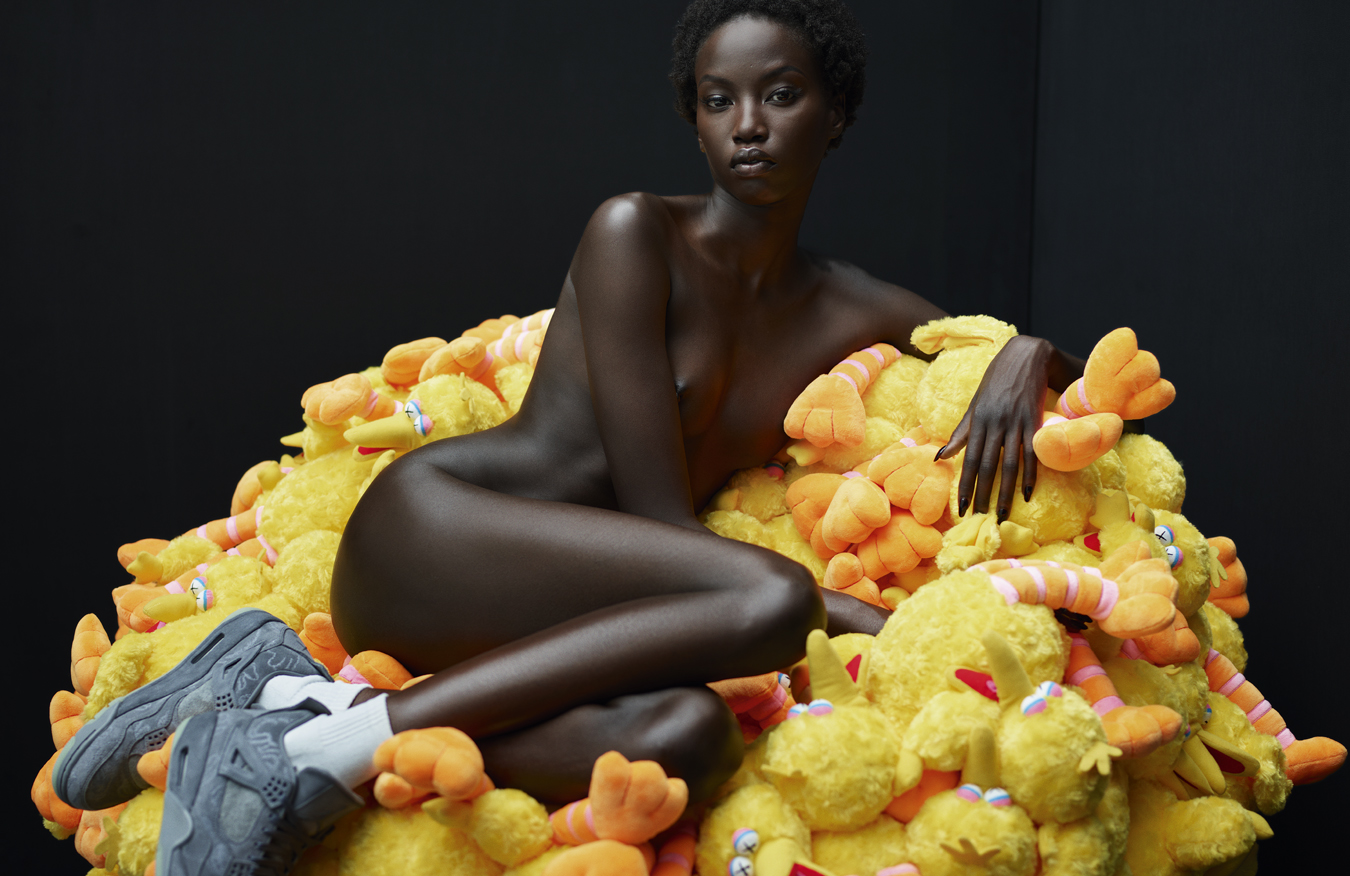
Futura: That’s excellent! The athletes of the world, they’re all into this stuff. So many of them are so young, it’s cool to see their support and start an interest in art.
Roger: Lenny, do you have an icon moment?
Futura: I look at my Futura signature as iconic, and something I am always going to stand behind, sort of like Stüssy. It’s become an identifier. I like it because it’s different. It’s not a tag, it’s a logo.
KAWS: I never thought of your signature in relation to something like Stüssy. Stüssy’s signature created a global brand. Now looking back at those early photos of walls with a Futura 2000 tag on them, it just stands apart in such a different way.
Futura: I was onto something, but it was unconscious. I always acted on impulse and never cared about public opinion, per se. But I wanted to formulate something that made sense to me. The first Futura 2000 tag with the arrows, I look at now and I think: what a crazy idea to come up with something like that at that time which has come to be known in the commercial space.
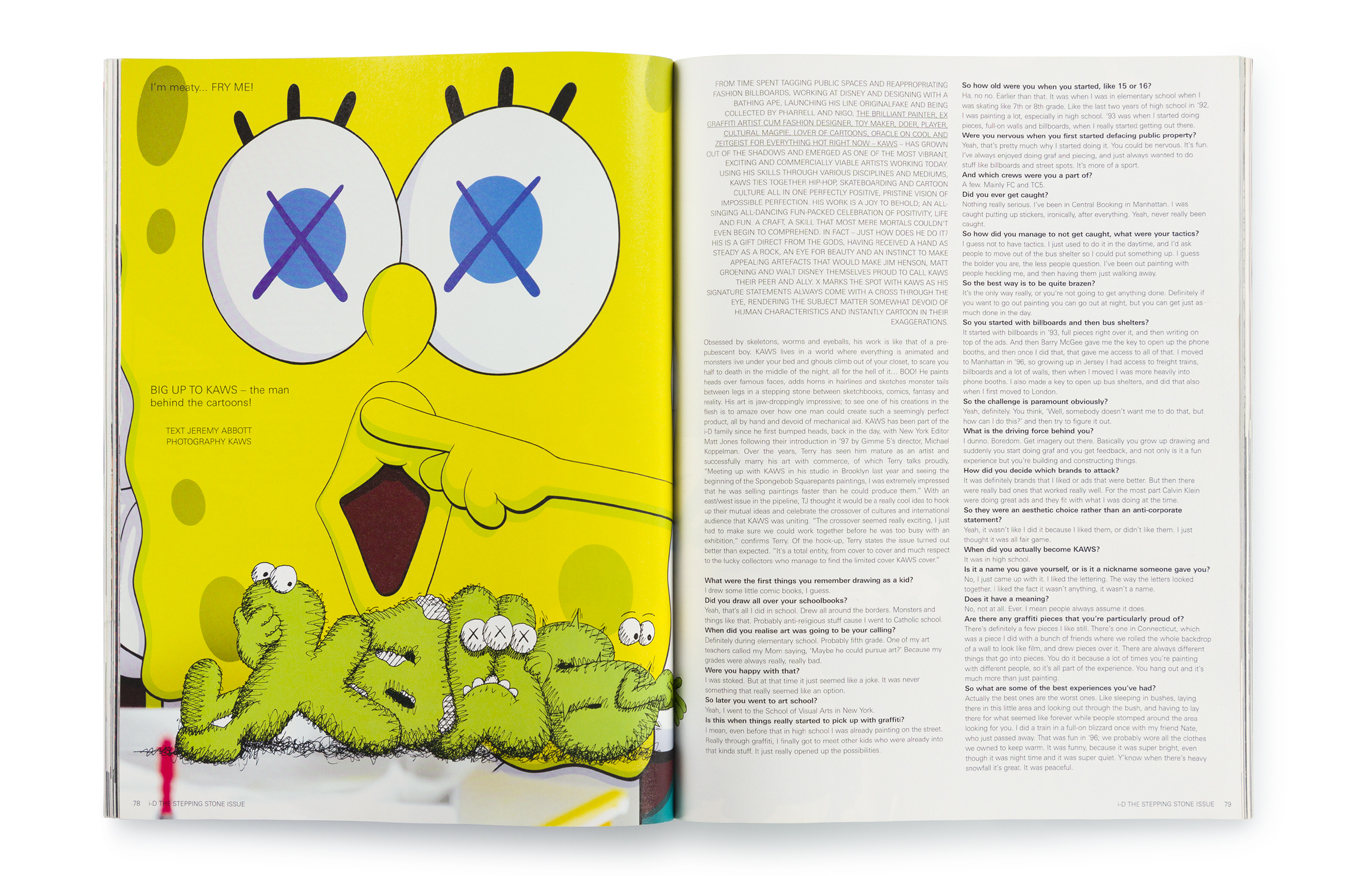
Roger: You are both driving so many commercial projects that are on a global scale, especially in fashion. I can’t go anywhere in the world without seeing your work on apparel.
KAWS: It’s the best way for your work to disseminate. You make work that can live on and with people in a different way. Lenny really paved that way in the early 90s, with what he was doing already with Stash and how that led into other realms. Lenny came up well before my time, but I feel that 90s moment was new for everybody. I remember seeing you excited about A Bathing Ape and other things going on in Japan and how you would never have imagined we would get that global focus.
Futura: We were aided by Nigo, and all of the individuals we met in the late 90s into the new millennium who helped launch our positions. That whole new streetwear community at the time was heavily supported by the magazine culture that existed in Japan. They were paying attention to Western art. They were looking outside and bringing external creativity into their story, and turned us on to countless people and built relationships with brands that we still work with today. I learned so much from that time: how they operated, the quality, the care and the customer service angle. I’m so grateful because they did put us on a pedestal – giving us covers of magazines at that time was outrageous. We weren’t getting that attention in America back then.
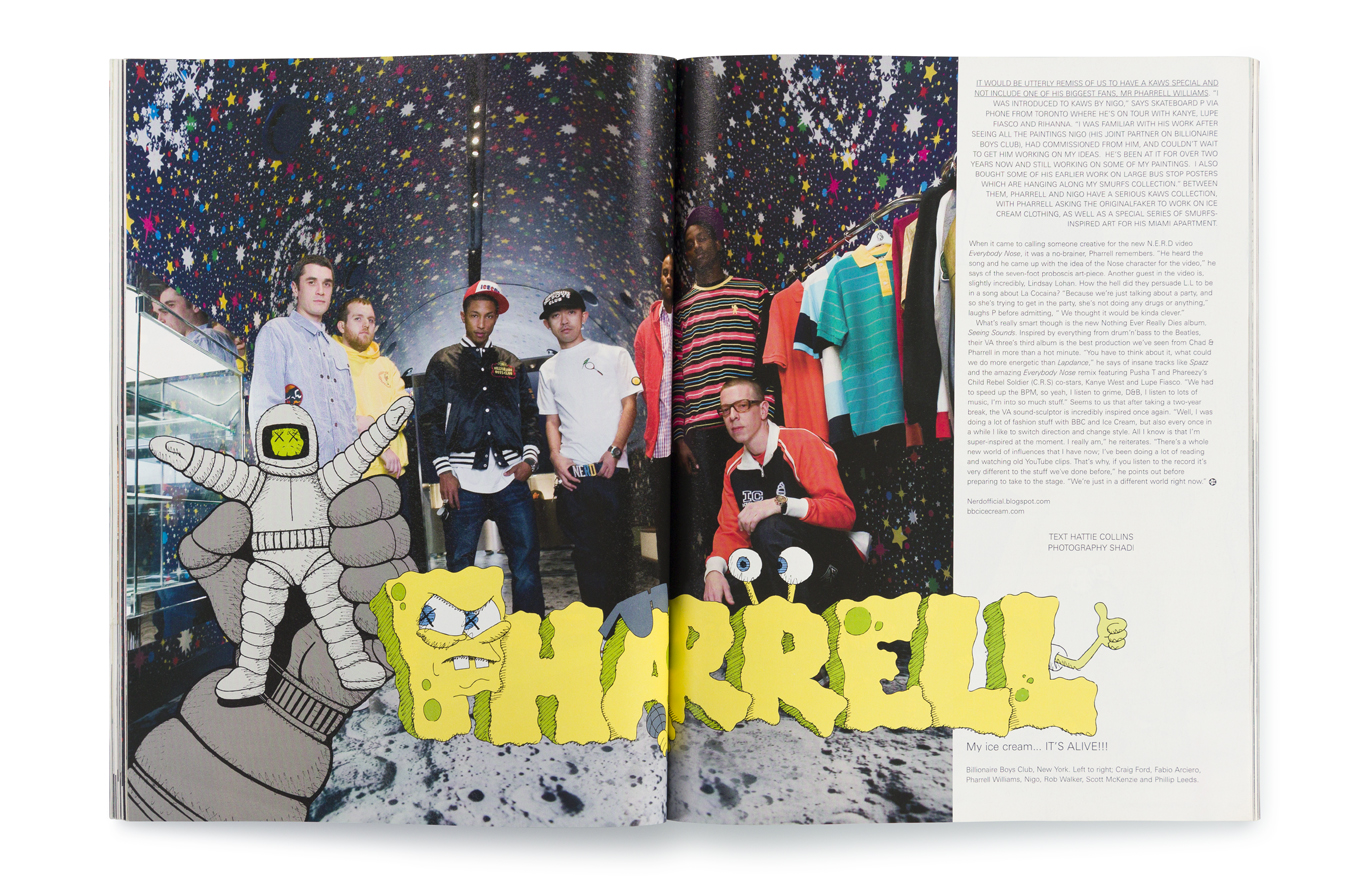
KAWS: They were ahead of that in the late 90s, and the synergy was good. They really elevated what we were doing by giving us a platform and at the same time bringing what they were doing to a larger audience.
Futura: I still feel the beauty of those relationships. We were engineers in the sense that we built bridges, we didn’t burn them. You see how long those bridges have lasted. I always saw people as a global set, these global satellites.
Roger: Both of you respect and study the history of graffiti more than most people. How important is it to know your roots?
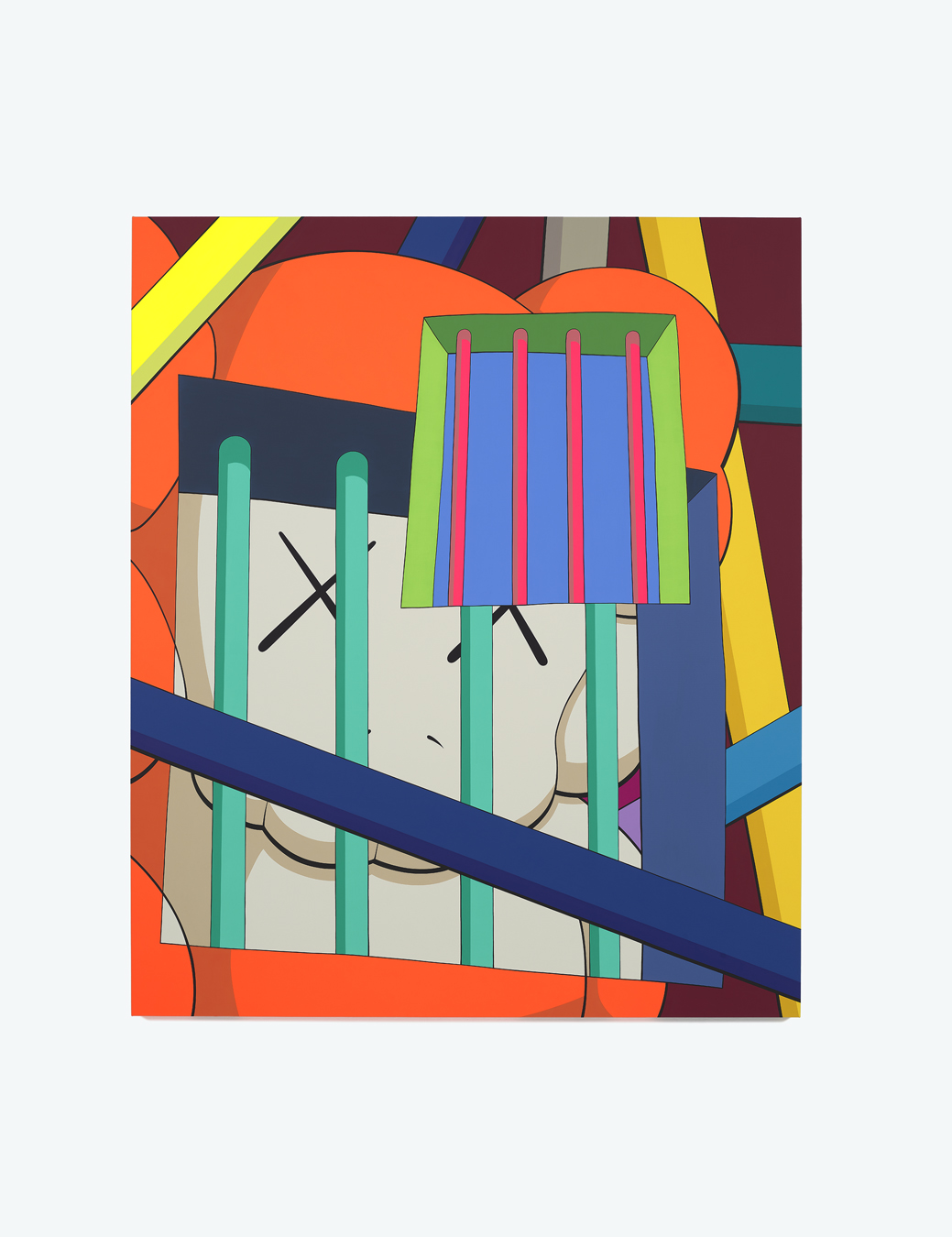
KAWS: I am interested in the stories and histories of all the artists I follow, because understanding the foundation of a movement is key. With something like graffiti that was done by kids in the beginning, and not well documented early on, getting the stories from the people that lived it and celebrating the pioneers while thankfully many are still with us is a gift. Even looking back on my early days in graffiti, that was over 30 years ago and there have been countless numbers of graffiti writers that have come and gone in that time, all leaving their own histories.
Futura: I was a fan initially, even before I went into the military in 1973. I was hanging around trying to observe what I could. Seeing STAY HIGH 149 at a show in 2000 really excited me about the history. It gave me such a rush. It was a few years before you [Roger] did the deep dive into the roots. I always credited you for bringing so many of the pioneers we had never met out to Art in the Streets at MOCA in LA. That’s when I got to meet TAKI183 for the first time. You were instrumental in bringing all these individuals back out. It’s such a credit to you that the story can now be told. It was my childhood and I’ll just be a little kid about those people in how I feel. They’re so important in the framework of what this all became.
Roger: What makes a good graffiti writer in today’s world?
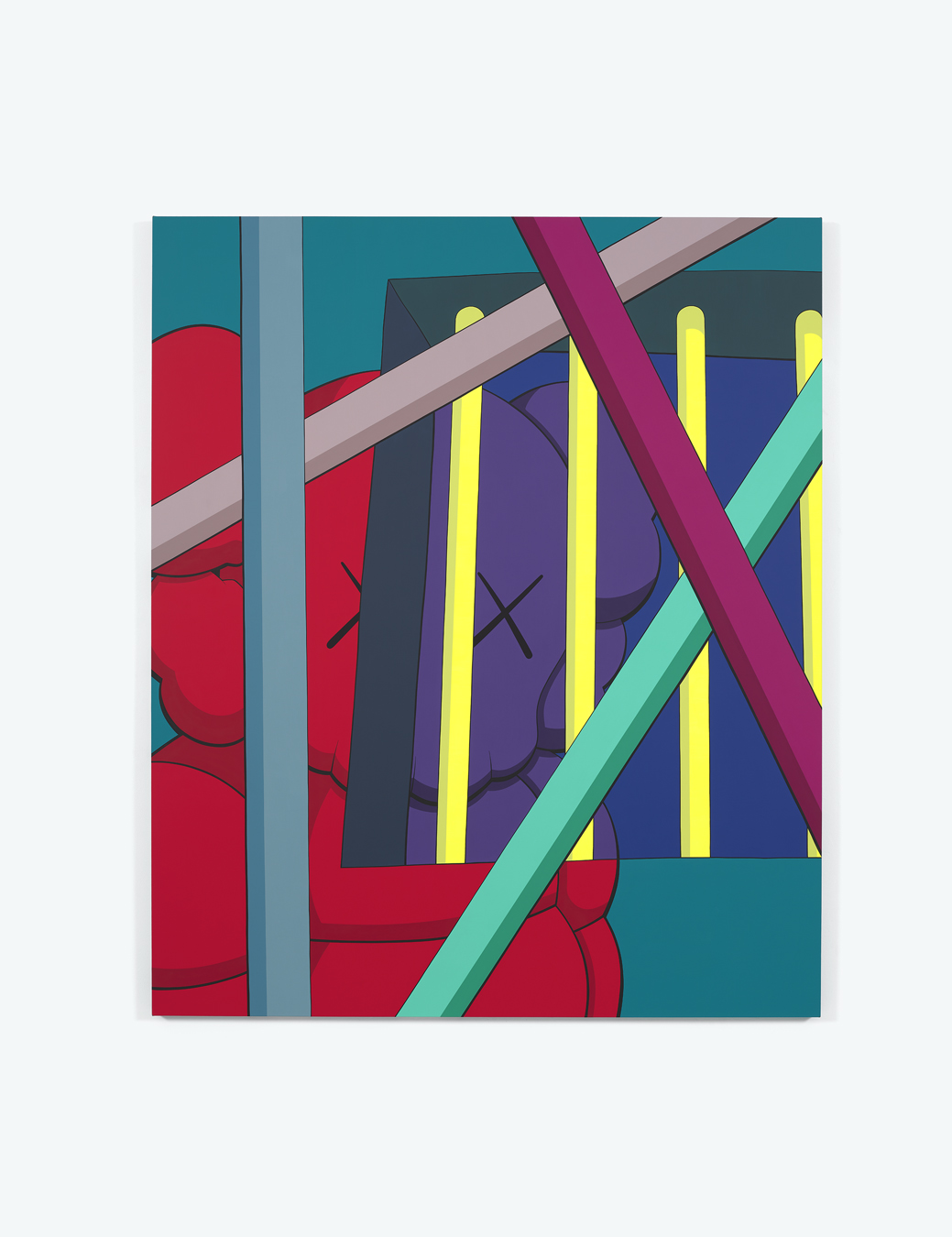
KAWS: Just persistence. It’s a different playing field today. Obviously. I don’t feel like a player in it at all; I feel like an observer. It’s a hard question to answer. I am impressed with a lot I see out there. The pandemic opened the floodgates for so much graffiti again, at least in New York. Everything has been getting painted like we have not seen in the previous decades.
Futura: There was a moment. Whether it was the pandemic or the summer of George Floyd, law enforcement was checking out of the “lesser” things to worry about at that moment. What 1UP is doing, it’s aggressive and I find that admirable and respect them for being committed to their movement. It’s the new ideas they can come up with and execute almost with choreography.
KAWS: Then you have someone like PRIEST, who Roger just had a show with. I didn’t know him: I just saw it and it was one of those instances where it just felt like this feels new. I saw the trash bag ‘graffiti camo’ video that he did and it made me laugh and I ordered one. That was all I knew about him at the time, but it got me to look more closely at what he was doing, and then we started to communicate.
Futura: That takes us back to the original story of supporting others. You simply have a love for the art and now you’re able to help some folks out, which is the beauty of this culture we’ve created. You’ve got elders within it that are in positions of buying power. Whereas when we were coming up, doing it in those spaces years ago, that didn’t exist.
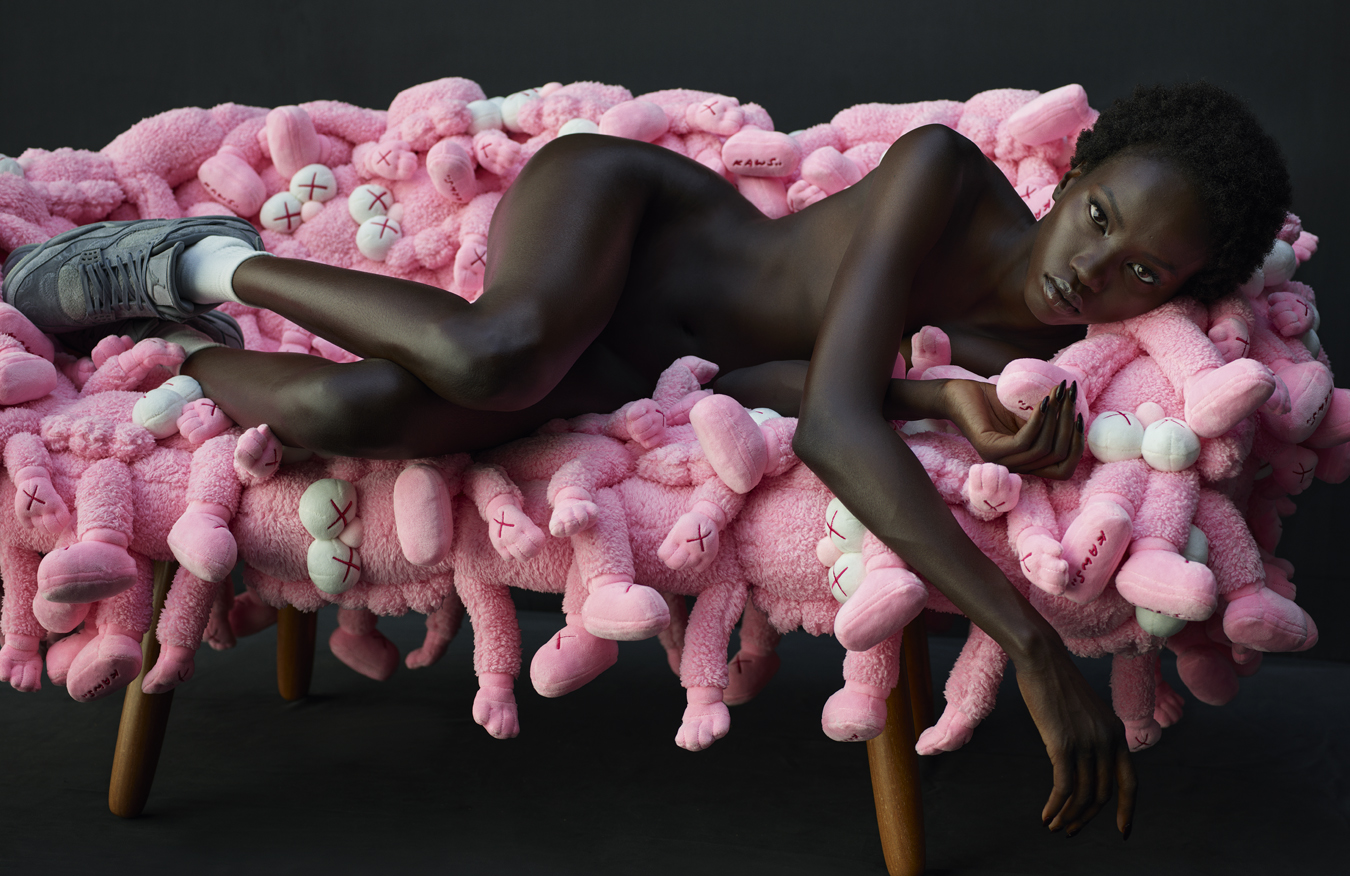
KAWS: At that time your contemporaries were not potential buyers, and you might not even know you could sell work as just showing it was a battle. In the 90s I didn’t imagine it was possible. I saw what you guys had done a decade or so beforeand that seemed like another world. The entire culture was going through this evolution that helped get us where we are today.
Futura: In the 80s it went from what was an underground movement within the subway system to the masses, and then it sort of stopped. There was a transition in the 90s. The available spaces to show were different, and the scene seemed more underground. The story needed more time and more members to participate. We were all collectively making noise all around the planet, leading up to the 2000s. Then in 2000, you have this other revelation. More artists were coming up and everyone’s just about the right age. This graffiti movement that had existed locally became a global energy.
Roger: You can only pick one – what is your favourite tag of all time?

Futura: It’s too easy for me. It’s both from the same hand: VOICE OF THE GHETTO first, then STAY HIGH 149. The fact that both of those came from one individual is so amazing.
KAWS: Honestly Lenny, I would put you up there.
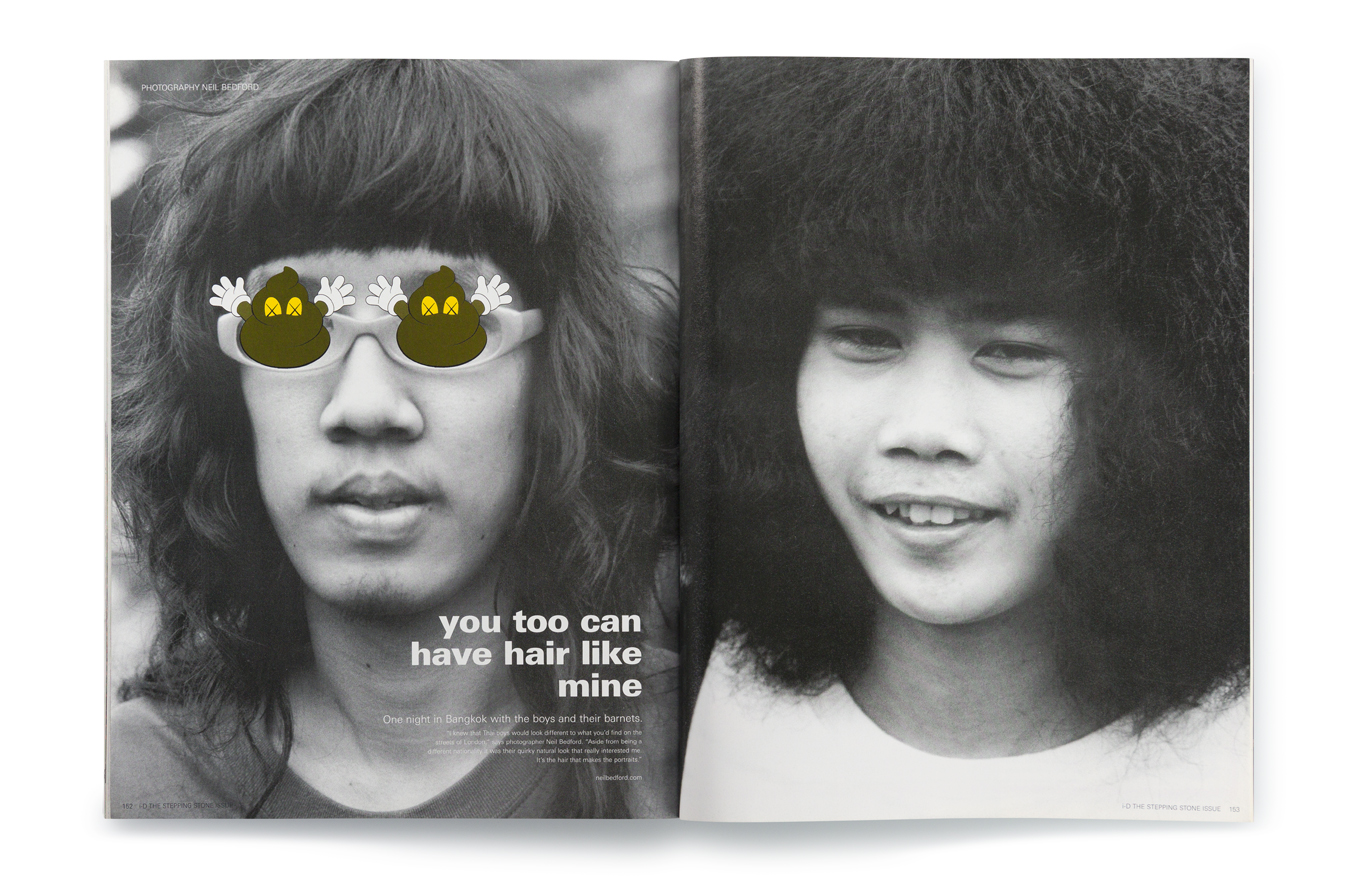
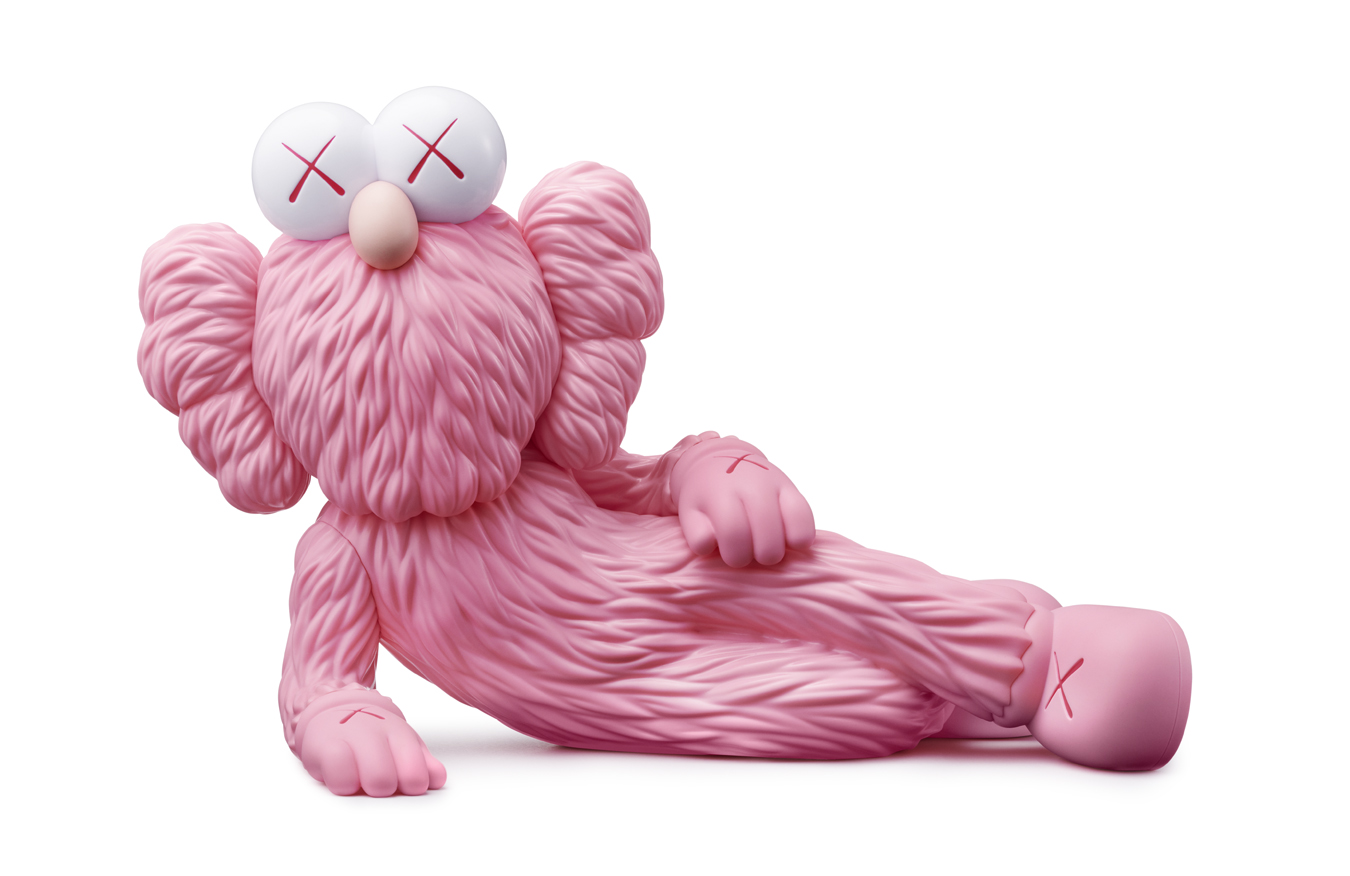

Credits
Photography Mario Sorrenti
Fashion Alastair McKimm
Hair Jawara at Art Partner using Oribe and Dyson
Make-up Jamal Scott using Fenty Beauty
Nail technician Honey at Exposure NY using NAVYA Nail Lacquer
Photography assistance Kotaro Kawashima, Brett Ross and Nate Martin
Digital technician Chad Meyer
Fashion assistance Madison Matusich and Taylor Wood
Hair assistance Sondrea Demry
Make-up assistance Hinako Takagaki
Production Katie Fash and Layla Néméjanski
On set production Steve Sutton
Production assistance Wiliam Cipos
Art handler Matt Leines
Art assistant David Arkin
Casting director Samuel Ellis Scheinman for DMCASTING
Model Anok Yai at No Smoking
Anok wears socks (worn throughout) stylist’s studio
Trainers (worn throughout) KAWS X AIR JORDAN 4 RETRO
Artworks photographer Farzad Owrang © KAWS
Chairs © KAWS and Estudio Campana
